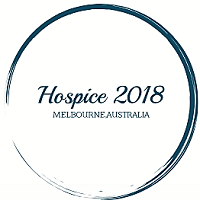
Hiromichi Matsuoka
NSW, Australia
Title: A Multi-institutional, Randomized, Double-blinded, Placebo-controlled Trial of additive Duloxetine for Cancer-related Neuropathic Pain Refractory to Opioids and Gabapentinoids: JORTC PAL-08(DIRECT study)
Biography
Biography: Hiromichi Matsuoka
Abstract
Purpose: Management of cancer-related neuropathic pain refractory to opioids remains challenging. We have investigated the additional efficacy of duloxetine for cancer-related neuropathic pain refractory to opioids and gabapentinoids.
Methods: A multicenter, randomized, double-blind, placebo-controlled trial. Patients with any cancer-related neuropathic pain, currently taking opioids, non-responsive or intolerant to gabapentinoids were eligible. Diagnosis of neuropathic pain was based on the International Association for the Study of Pain (IASP) algorithm. Patients with chemotherapy-induced peripheral neuropathies were excluded. Patients were administrated 20 mg to 40 mg of duloxetine or placebo for 10 days. The primary endpoint was the average pain intensity (Brief Pain Inventory (BPI) item 5) at Day 10 (BPI d10).
Results: 70 patients were enrolled at 12 sites. BPI on Day0 (before treatment) were 5.6 in group D (duloxetine) and 5.7 in group P (placebo). BPId10 was i) average of group D 4.03 [90% CI 3.33, 4.74], group P 4.88 [4.37, 5.38] (P = .053) (Complete Case: CC analysis); ii) group D 4.06 [3.37, 4.74], group P 4.91 [4.41, 5.41] (P = .048) (Baseline Observation Carried Forward: BOCF analysis). Point estimate of the difference of average values between the two groups was -0.84 [-1.71, 0.02] (CC analysis) and -0.85 [-1.69, -0.01] (BOCF analysis). Compared to Day 0, the improvement rate of 30% or more, and 50% or more at Day 10, were 44.1% in group D, 18.2% in group P (P = .022), and 32.4% in group D, 3.0% in group P (P = .002), respectively. Although there was one case of discontinuation of adverse events in Grade3 (CTCAE version 4, JCOG), it was due to deterioration of the primary disease and there was no relation with protocol treatment.
Conclusion: Duloxetine is clinically effective for cancer-related neuropathic pain

